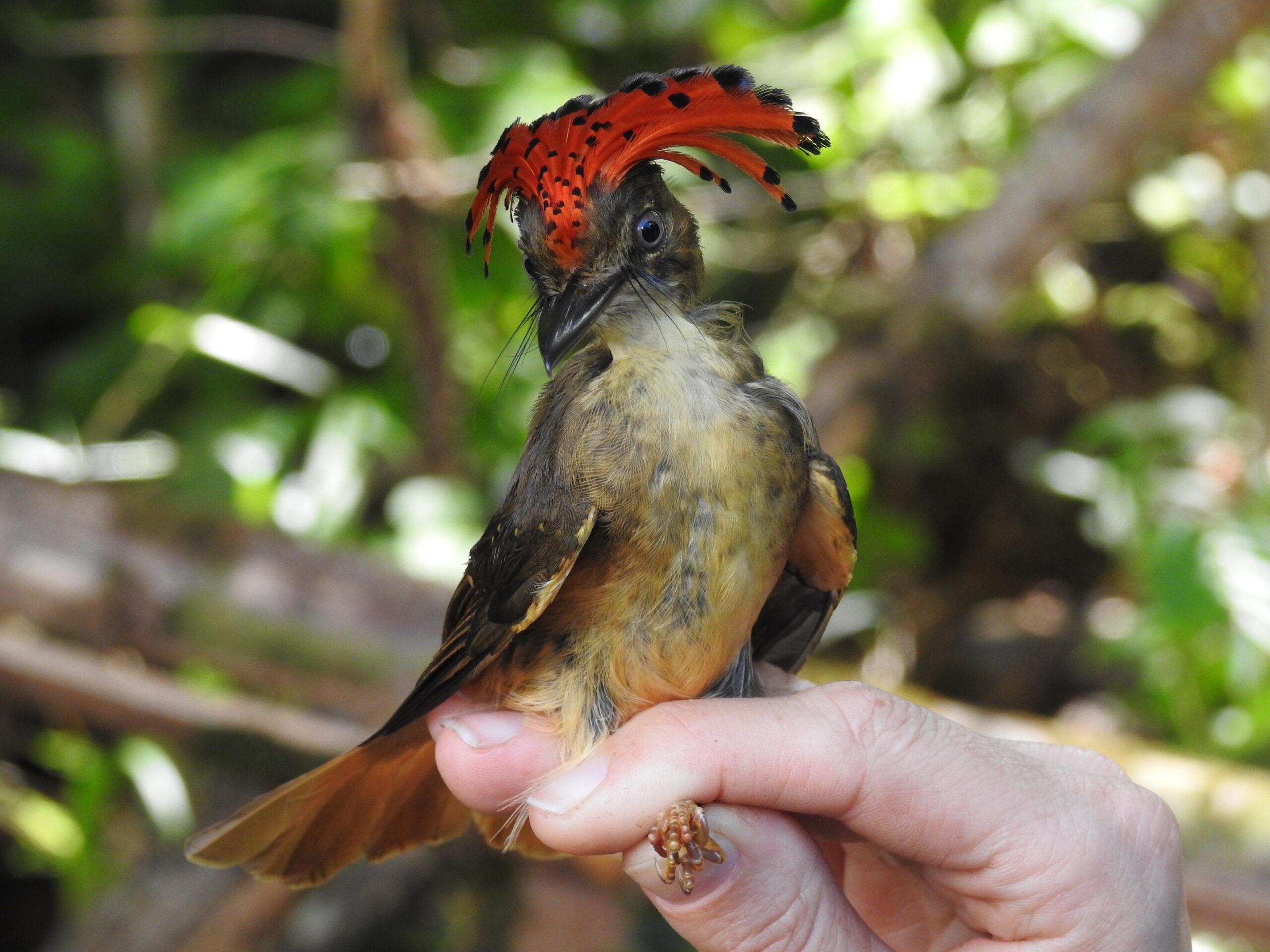
MoSI Bird Banding Program
Mist netting and banding with the Institute for Bird Population’s (IBP) MoSI Program
MoSI: Monitoreo de Supervivencia Invernal (Overwinter survivorship) of Neotropical Migratory Birds
Partners: the Institute for Bird Populations (IBP)
Project period: Ongoing from 2020
Osa Birds is part of the IBP Latin America bird banding network along with dozens of partners in Central and South America and the Caribbean and we couldn’t be happier!
When we first got started we were originally funded by the USFWS in our first two years, and now we are able to continue the program through multiple sources of contributions. In 2020 our specific activities included completing a MoSI training course for our biological monitoring groups, followed by regular yearly MoSI mist-netting at four new stations in Dos Brazos de Rio Tigre and Rancho Quemado. Our local community banders conduct three pulses per season; each season includes pulses in December, February and April during spring migration. As our community partners have been monitoring birds now since 2015 using established methods and protocols, it only made sense to bolster that program with additional methods for estimating populations through mistnetting and banding as a form of mark – recapture.
According to IBP, the MoSI methodological approach of mist-netting and banding birds along established monitoring routes supplements and bolsters traditional monitoring methods already in place. This method is specifically tailored to provide key information on the conservation challenges of neotropical migratory birds in their tropical habitats and year-round resident birds. This approach spells out a distinct objective for this project to understanding bird declines and the factors that limit populations. Implementation of a MoSI mist-netting and banding program will provide the vital rates of bird populations such as adult survival rates, site persistence, and population trends over the long-term.
When a bird is mistnetted (captured in our fine mesh nets), they are carefully extracted and processed. During processing a weight is taken and the leg is measured to place a properly fitted metal band. Various other measurements are taken such as; fat score, wing length, appearance of a brood patch or cloacal perturbance which helps sex the bird, molt and feather wear which helps determine age. An overall health check is also done to look for anomalies such as parasites. Birds are quickly processed and released.
We have processed some interesting birds over the years including a male Royal Flycatcher, dozens of Black-cheeked Ant-Tanagers (an Osa endemic), a Broad-winged Hawk, Barred Forest Falcon, and Double-toothed Kite; Lesson’s Motmot, and White-tipped Sicklebill only to name a few. There are far too many to add here. Here is a complete list.
| Seasons | # Resident Bird species | # Migratory Bird species |
| 2020 – 2021 | 74 | 8 |
| 2021 – 2022 | 77 | 9 |
| 2022 – 2023 | 40 | 6 |
| Species | 2020-2021 | 2021-2022 | 2022-2023 |
| Broad-winged Hawk | 1 | – | – |
| Yellow-bellied Flycatcher | 2 | 4 | 3 |
| Great Crested Flycatcher | 1 | 2 | – |
| Swainson’s Thrush | 49 | 31 | 116 |
| Mourning Warbler | 5 | 5 | 1 |
| Northern Waterthrush | 3 | 4 | 1 |
| Chestnut-sided Warbler | 1 | 3 | – |
| Summer Tanager | 2 | 2 | 1 |
| Kentucky Warbler | – | 1 | – |
| Tennessee Warbler | – | 2 | – |
| Hooded Warbler | – | – | 1 |
| Ovenbird | – | – | 1 |
A bit about Swainson’s Thrush
You can see from these tables that the vast majority of our captures are resident Costa Rican birds while only a small handful are Neotropical migratory birds. This is primarily due to the fact that many migrants spend their time higher up in the canopy while our nets are ground nets that only reach 3 meters high.
The one data point that should stick out for you here is the high number of Swainson’s Thrush (SWTH) captured in all years but especially in the 2022-2023 season. Normally, Swainson’s Thrush do not overwinter in the Osa Peninsula and are considered to be passage migrants only travelling through on their way to South America and back. However, one Swainson’s Thrush was captured in December 2020 at our Rancho Quemado station, and again recaptured in December 2022 at the same site (and same net) showing that some individuals stay in the Osa Peninsula for the winter season and show high site fidelity which is known for passerines. Indeed, at our other station in Dos Brazos, we observed an individual Swainson’s Thrush in the month of December as well, though not captured in our nets. We have not captured Swainson’s Thrush during our February pulse. All the other captures take place in March as migration is beginning for the species and April when migration is in full swing. In April 2023 we captured and banded 115 individual thrush in a period of 6 days in Rancho Quemado! When this happened we shut down our station to resident birds and focused solely on processing Swainson’s Thrush due to the overwhelming numbers and needing to keep processing times short. You will notice lower numbers of resident species for for 2022-2023 for this reason.
Now this is spring migration. What about fall migration? Because fall migration takes place in September and October it is more difficult to mistnet due to the rainy season and daily storm activity. Anecdotally, the numbers of Swainson’s Thrush are much lower and thrush are more rarely observed in the field during this time of year!
*Our MoSI bird banding program is permitted though SINAC-ACOSA and is lead by certified NABC banders!
Enjoy some photos!
























